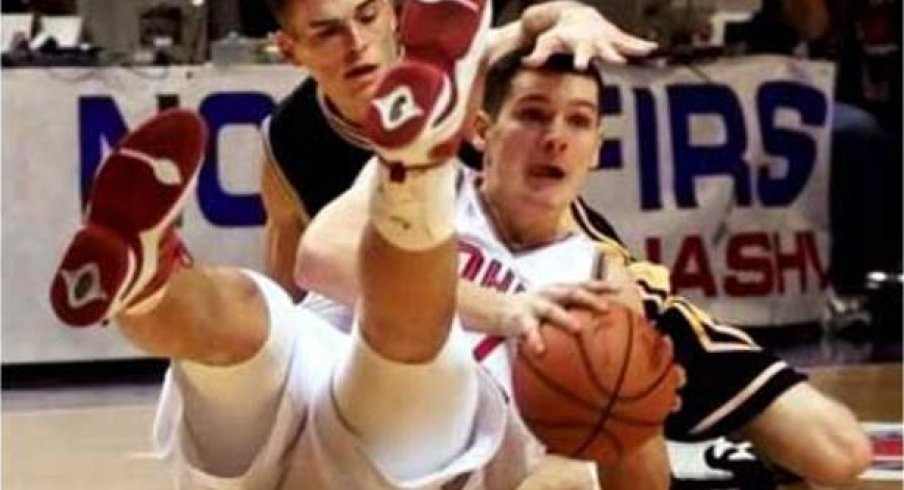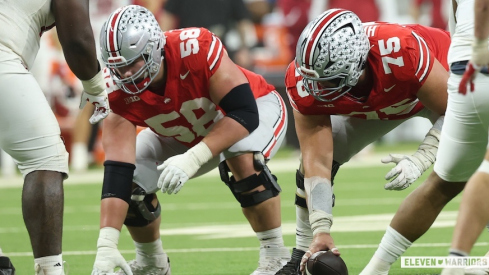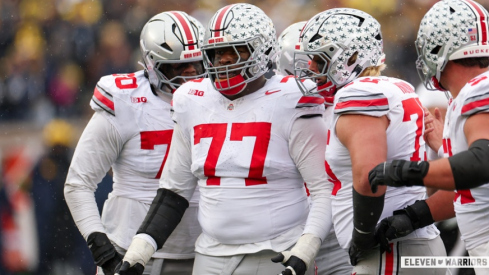With Ohio State men's basketball returning only five letterwinners, everyone knew the 2015-2016 season would be a challenge. The last week has only raised the stakes.
On Wednesday, Virginia was announced as the Buckeyes' opponent in the ACC-Big Ten Challenge. Games against Memphis, UConn and Kentucky ensure a difficult nonconference schedule, even if all the other games are cupcakes. Seeing as the Big Ten looks as strong as ever, Ohio State could be in for a rough season.
But worry not: even if Ohio State misses the NCAA Tournament, it won't come close to the worst season in program history. No matter how next year goes, the Buckeyes have been far, far worse.
1950-1951
Ohio State entered the 1951 season with many reasons to be optimistic. The Buckeyes had gone 22-4 the year before, by far the most wins in school history, losing in the NCAA Tournament to a program of cheaters and scofflaws by a single point. Surely they would challenge for a national title despite losing their coach, wouldn't they? Er, no.
The 1951 team would finish the year 6-16, tied for last in the Big Ten. Making it worse was the coach who left: Tippy Dye, the hero who beat Michigan as the starting quarterback from 1934 to 1936. Dye moved on to bigger and better things at Washington, creating a grudge against the Pacific Northwest that only truly ended in January with the pasting of Oregon in the national championship game.
1975-1976
The Ohio State men's basketball program reached its peak in the early 1960s under head coach Fred Taylor, winning a national title and making two more national championship games. He would have occasional success in the next decade, making a Final Four and an Elite Eight, but his program settled into an above average rut. That was until a career-altering 1975-1976, when the Buckeyes went 6-20.
From a player loss perspective, it almost made sense. The program lost five seniors from the 1975 team, including leading scorer Bill Andreas and benchwarmer Kevin Kurgis – yes, that Kevin Kurgis. Three of Ohio State's top four players (Larry Bolden, Craig Taylor, Mark Bayless) returned, though, and there weren't any major injury issues; the team just fell apart on defense. The denouement was a 29-point road loss to national champion Indiana. On the heels of the worst season in his career, Taylor retired.
1994-1995
The mid-1990s were a rough time for Ohio State basketball, especially since the program was exceptional a couple years before. In 1991 and 1992, behind Jim Jackson, the Buckeyes recorded two top-five AP poll finishes. Three years later, in 1995, Ohio State would crater with a 6-22 record, the worst in school history. What happened?
Ohio State's basketball program was a mess off the court, which had consequences on it. A panoply of legal issues cost the Buckeyes several players, including leading scorer Greg Simpson. At one point during the offseason, Ohio State was down to six scholarship players. The Buckeyes would be outscored by 7.8 points per game in 1994-1995, shooting reasonably well but rebounding poorly and frequently turning over the ball.
Following the putrid 1995 season, Ayers would have two more chances to right the ship. The Buckeyes went 10-17 in both 1996 and 1997, and the last of Randy Ayers' goodwill was depleted. He was fired soon after.
1997-1998
When Jim O'Brien was hired to coach the Buckeyes in 1997, he knew what he was getting into. Ohio State was a rebuilding project, and it would take time to produce a winner. Sure enough, the Buckeyes went 8-22 in O'Brien's first year. The lone Big Ten victory being a 61-56 triumph at Wisconsin, proof that the Badgers have dreary basketball written into their genes.
There were two things to salvage from Ohio State's awful season: the roster was very young, with phenom freshman Michael Redd, shot blocker Ken Johnson and utility man Jason Singleton showing potential. The other was the incoming talent: Brian Brown, Boban Savovic and Scoonie Penn. Those core players would carry the Buckeyes to the Final Four the next season.
2003-2004
The 2003-2004 team was the epitome of a lame duck season. Beginning with blowout losses to San Francisco and San Diego State, the Buckeyes limped to an 8-5 non-conference record. In the Big Ten's worst season ever, Ohio State went 6-10 in conference play and lost resoundingly in the Big Ten Tournament. At 14-16 is the program's last sub-.500 team, and it was a resoundingly boring season.
Jim O'Brien was fired after the season, not for losing but for giving money to a recruit (Aleksandar Radojevic) and knowing that Boban Savovic received impermissible benefits. Not only would Ohio State men's basketball be hit with major NCAA sanctions (including vacating the 1999 Final Four), the university would lose a wrongful termination lawsuit to O'Brien and have to pay him $2.2 million plus interest. The silver lining: Ohio State soon hired a coach from Xavier, one who would have a modicum of success for the next 11 years.
Ohio State has had some pretty unfortunate or bad teams over the years. Unless something crazy happens, like a total recruiting flop or multiple injuries, the 2015-16 Buckeyes will be safeguarded from infamy.


